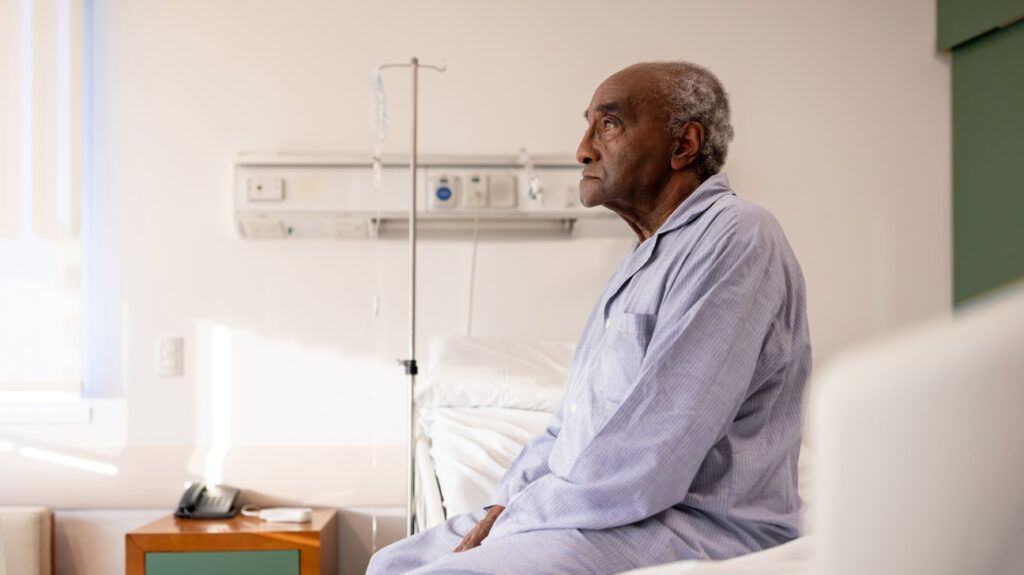Prostate cancer seeding, also known as brachytherapy, is a treatment that involves placing radioactive seeds into or near the prostate to shrink the cancer.
Doctors can use brachytherapy alone or in combination with other cancer treatments. Using brachytherapy decreases the risk of radiation damage to surrounding organs and can help stop the cancer from growing.
Depending on the procedure, seeds may remain in the body permanently, actively emitting radiation for about 3–6 months before becoming dormant.
This article explores prostate cancer seeding. Learn its purpose, who is eligible, about the procedure, and more.

Brachytherapy is a specialized form of radiation treatment doctors
This treatment involves placing tiny radioactive seeds into or near the cancerous tissue in the prostate gland. The
Brachytherapy allows for a more targeted and intense approach to reducing the size of the cancer, unlike external beam radiation, which directs high-energy rays from outside the body.
Types
Doctors have
- Low-dose rate (LDR) implants: For this type of brachytherapy, the seeds remain in or near the prostate for 1–7 days while the treated patient remains in the hospital. At the treatment’s completion, the doctor removes the seeds.
- High-dose rate (HDR) implants: For this type of brachytherapy, the seeds remain in place for 10–20 minutes, then the doctor removes them. The treatment may occur twice a day for 2–5 days or once a week for 2–5 weeks.
- Permanent implants: The seeds remain in place permanently for this type of brachytherapy. The radiation dose gets weaker over time until it has completely run out.
While brachytherapy is an effective treatment option, doctors do not use it for everyone with prostate cancer. They typically base their treatment plan on several factors that indicate a higher likelihood of successful treatment outcome. These factors may include:
- Low Gleason score: This score is a grading system that determines how
aggressive the prostate cancer is. - Low PSA level: The PSA level helps doctors to see if the cancer
has spread to other areas of the body. - Stage T1–T2 tumors: Staging
is how doctors refer to the size and extent of a tumor. Stage T1–T2 means that cancer has not spread beyond the prostate.
People who are
- have cancer that has spread to distant areas of their body
- carry too high of a risk to have the procedure
- have urethral defects
- have a limited life expectancy
- have inflammatory bowel disease (IBD)
Before undergoing brachytherapy, the person having the procedure will have an in-depth meeting with their doctor or nurse to review the treatment plan and procedure.
The doctor will perform a physical exam, review the medical history, and possibly order imaging tests.
They will also discuss the procedure, possible side effects, and precautions.
There are
Permanent brachytherapy
The doctor uses needles to insert small radioactive seeds,
Doctors typically place about
Temporary brachytherapy
The doctor uses hollow needles to insert soft catheters into the prostate through the skin between the scrotum and anus. The catheters remain in place for the duration of the treatment.
For several sessions over the course of two days, the doctor will insert a radioactive source,
The recovery after the procedure depends on which procedure the doctor uses.
After permanent brachytherapy, the person
Following temporary brachytherapy, the person
Precautions
Because a person who undergoes permanent brachytherapy may give off small amounts of radiation for several weeks or months, the doctor will precaution against being near pregnant people and small children for a certain period.
There is a small risk of some seeds moving out of place with permanent brachytherapy. Because of this, the doctor may ask the person to strain their urine for a week following the procedure to catch any seeds that come out. They may also recommend wearing a condom during sex.
Other possible risks and side effects
Brachytherapy
On rare occasions, people experience urinary incontinence — trouble controlling their urine. It is more common to have frequent urination or irritation of the urethra for several weeks after the procedure.
Some studies suggest having brachytherapy
When treating low- and intermediate-risk prostate cancer, the success rate at 5 years of stopping the cancer from growing ranges from
If doctors use brachytherapy in combination with external beam radiation,
If a person had brachytherapy as their first-line treatment for prostate cancer and yet their PSA levels continue to rise after treatment, their doctor
- surgery to remove the prostate
- cryotherapy
- hormone therapy
Prostate cancer seeding, a procedure doctors call brachytherapy, involves inserting small radioactive seeds into the prostate to decrease the cancer’s growth.
Depending on the type of procedure, doctors may place the seeds temporarily over the course of several days or they may place them permanently.
This type of radiation treatment helps reduce the negative effects of radiation on surrounding healthy tissue. Other methods of treatment are also available to use in combination with brachytherapy.
